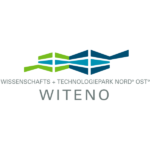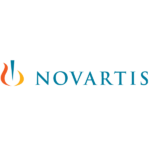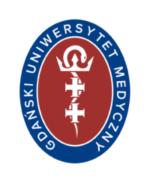Industry Opinion: Developing Excellence in Pharmaceuticals and Aquaculture
By Director Thor Amlie, Norwegian Bioindustry Association
Today’s Norwegian biotechnology industry is made up by approximately 100 companies, congregating around the country’s six universities at Oslo, Tromsø, Bergen, Trondheim, Stavanger and Ås. Five are listed on the Oslo stock market.
Moving into oncology
While Norway has had a reputation for so-called “blue” or marine biotechnology – marine sciences are a specialty at the universities of Bergen and Tromsø – Norway is now fast establishing itself as a new player in the oncology field, with Oslo as its focal point. More than 70 % of all cancer research in Norway is conducted in the Oslo region.
Prominent Norwegian cancer therapy companies include Algeta ASA, Clavis Pharma ASA, Photocure ASA and PCI Biotech Holding ASA.
The Norwegian Pharmaceutical Pipeline in 2011
For the fifth year running, Norwegian Bioindustry Association (NBA) has conducted a survey of the Norwegian Pharmaceutical Pipeline. The survey includes projects based on Norwegian R&D. A total of 19 companies had a pipeline in 2011, and there were 51 projects in clinical phases I-III. For more information see :
Heavy on research and biobanks
A number of international evaluations have highlighted the excellence of Norway’s science and research medical and environmental biotechnology. Norway’s research is of high quality with world-renowned researchers producing excellent clinical work. This stems from the strategic approach taken by the Norwegian Research Council to systematically create a range of results-orientated schemes to support and encourage research, including Norwegian Centres of Excellence (SFF) and Centres for Research-based Innovation (SFI).
Norway’s strength in cancer and other areas of medical biotechnology research stems partly from its wealth of in-depth information about its population. Well in advance of others, Norway began prospective population screening in the 1970s. Today, Norway has an excellent infrastructure of biobanks complemented by an efficient clinical records system. Created in 1951, the Cancer Registry of Norway, Institute of Population-based Cancer Research (Kreftregisteret) tracks all Norwegian cancer patients from suspected and confirmed diagnosis to remission or death. The law requires physicians to report cancer cases, including cancers discovered at autopsy. No other country has the same depth of data over so many years. Other linked national registries include the Medical Birth Registry, the Cause of Death Registry and the Norwegian Prescription Database.
Over 40 years, Norway’s biobanks have grown to contain tissue samples from more than 500,000 people, which is around 10% of the total population. The data are linked using the 11-digit personal identification number that is issued to all Norwegians at birth. This allows researchers and physicians to link population studies with disease diagnoses, to match controls and to compare pre-diagnosis, post-diagnosis and post-treatment tissue samples. As well as benefitting the health service, this is of course a major tool for the diagnostics and pharmaceutical industry.
From land to shining sea
From specialist delicatessens to supermarkets worldwide, Norwegian salmon is firmly established as one of the leading brands. This is a success that depends not just on the skills of the fishermen. Since the 1980s, the application of life science expertise has been one of the drivers behind the steady increase in production and exports of Norwegian salmon and other farmed fish. Thus while fishing may have dwindled as an occupation over the past half a century, Norway is now home to more than 1,500 fish farms and a world leader in the aquaculture industry.
Norway’s recent success in aquaculture is, undoubtedly, partly a result of transferring what researchers have learned in the agriculture sector into fisheries, combining traditional breeding knowledge with pioneering expertise in the life sciences – particularly in veterinary medicine and genomics.
Norway has already had several bounties from its coastal waters – a maritime industry, fisheries, tourism, and most recently North Sea oil. Marine bioprospecting looks like being the next. The Norwegian coastline is 22,000 kilometres long, and is starting to deliver excellent opportunities for the biotechnology industry.
Norwegian waters – the Arctic and sub-Arctic regions, the fjords and the coastline – are rich in species which could yield bioactives with applications in all sectors of the biotech industry. However, much of this marine biodiversity remains unexplored. In 2003, researchers at The Norwegian University of Science and Technology (NTNU) and SINTEF (Foundation for Scientific and Industrial Research at the Norwegian Institute of Technology) began collecting bioactive extracts from sediments, sponges and water surfaces in the Trondheim fjord. Later, a collaboration with the University of Bergen was established and by 2008, a number of anti-cancer and anti-bacterial hits and leads had been identified.
Pronova Biopharma’s health-promoting Omega 3 fatty acids are extracted from fatty species of fish, so the marine connection is very clear in their case. However, the marine connection is also apparent in companies such as Biotec Pharmacon and FMC Biopolymer. Not to mention Aqua Gen, Norway’s premier producer of salmonid eggs and aiming at being a total supplier of eggs to the national and international aquaculture industry. Other companies to watch are Aker BioMarine, Pronova Biopharma and Biosergen.
Industrial biotech
For a relatively small country, Norway has a long industrial tradition. It also has a history of companies able to reinvent themselves by embracing scientific progress. The large companies Borregaard and Statoil are just two examples of a growing trend to look at the opportunities offered by life sciences. Others are looking at a whole range of applications – from environmental clean-up to nanotechnology.
Borregaard is a world leading producer of chemicals from wood as an alternative to those derived from oil. Life cycle analysis shows that the use of wood as a raw material is sustainable and environmentally beneficial. For instance, carbon emissions from vanillin made from lignin are 90 % less than for vanillin produced from petrochemicals.
The company is involved in a number of biomass projects. In a project partly funded by the Norwegian Research Council, they are looking at obtaining products from wood, bagasse and straw through a new pretreatment process. Borregaard is also participating in two EU biorefinery projects – one on biorefinery pretreatment with the ultimate product being aviation fuel (co-ordinated by the University of Lille), the other on microfibrillar cellulose (coordinated by the University of Oxford).
The state-owned Statoil, one of the world’s largest oil and gas companies, also continues in its endeavours to use microbiology and advanced molecular biology tools for oil exploration, cleaner energy and biofuels. The company already has a built a huge library of around microbial isolates and metagenomic extracts from oil deposits around the world which it is now looking to find applications for in both its own and potentially other sectors. Statoil is also interested in second generation biofuels, using raw materials like animal fats, fish oil and plant oil,using thermophilic enzymes to create viable feedstocks.
An emerging hotspot
So while much of Western Europe’s biotech sector is in the doldrums, suffering from the combined effects of a financial crisis, slow clinical progress of its programs and struggling to raise the necessary funds to advance their development, Norway’s biopharmaceutical companies are still looking optimistically ahead. With a focused academic strength and support from the local investment community and government, Norway is well placed to establish itself as an emerging European biotech hotspot. Fact box:
Norwegian Bioindustry Association
Norwegian Bioindustry Association (NBA) is an interest organisation for the biotechnology industry in Norway. Established in 2001, it now has approx. 100 members, half of which are biotechnology companies, while the rest are e.g. research institutions or dealing with support functions such as intellectual property, investment, law or consulting services.
The NBA is organised as a branch organisation under the Federation of Norwegian Industries, and is a member of EuropaBio and an affiliated member of BIO. NBA is working for an internationally successful biotechnology industry in Norway. The main objectives are to improve industry conditions and to support business development for the member companies.
For further information on all member companies, please visit NBA’s web page (http://www.biotekforum.no) which has links to every company.
Norwegian Bioindustry Association

ScanBalt News
17 March 2025
LifeScience4EU Conference 2025 | 15-16 May | Krakow












